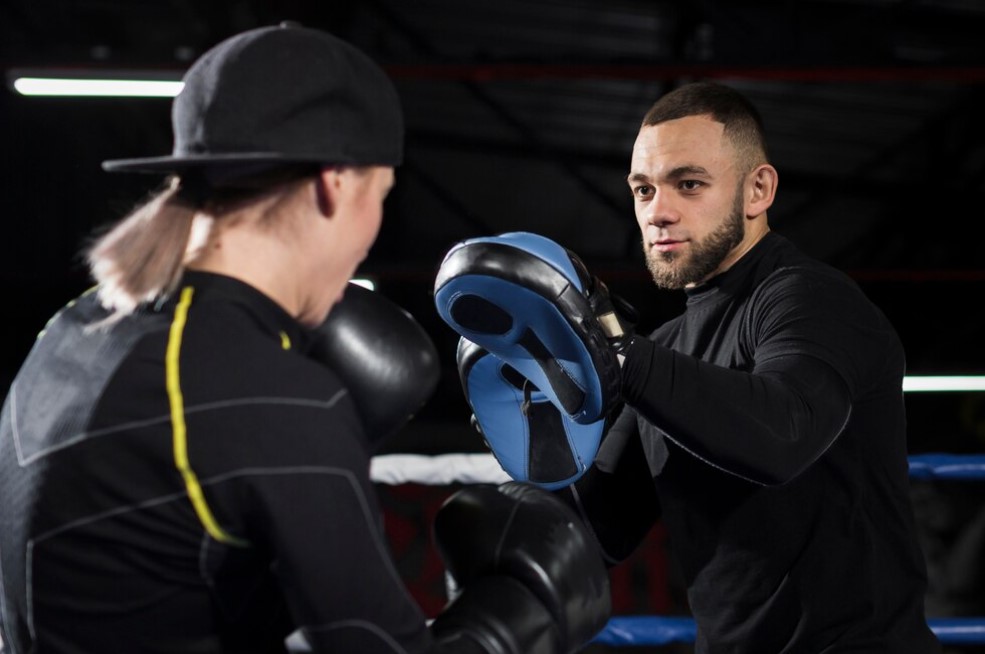MMA sparring is a pivotal component of a fighter’s training regime. It simulates the intensity and unpredictability of actual combat. This article delves deep into the nuances of MMA sparring. We shed light on its critical role in preparing warriors for the cage.
The essence of MMA sparring
Sparring in MMA is a real-time rehearsal for fighters. It offers a chance to weave together the strands of martial arts they train in. Unlike isolated drills, sparring demands that fighters respond to the dynamic actions of an opponent.
Fighters suit up in protective gear, ensuring safety while they explore the limits of their combat skills. The sparring ring fills with the noise of gloves hitting mitts, the loud breaths of athletes doing techniques, and coaches’ advice from the side.
Striking
When fighters spar, they focus on striking as a critical aspect of their arsenal. They exchange jabs, crosses, hooks, and uppercuts, along with kicks, knees, and elbows. The goal is to land significant strikes while evading or blocking those from their partner.
Precision takes precedence over power to prevent injuries and promote technical improvement. Fighters work on their footwork, closing the distance to land blows and retreating to evade attacks. The striking dance in MMA sparring is both an art and a science. It requires fighters to read their opponents and react in milliseconds.
Grappling
As the sparring match moves closer, fighters engage in the grappling aspect of MMA. They test their ability to secure takedowns, defend against them, and manoeuvre on the ground. The mat becomes a chessboard. Each athlete tries to out-position the other, seeking dominance through superior control.
The sparring session hones a fighter’s submission skills. It allows them to attempt chokes, joint locks and holds within training safety. Transitioning smoothly from striking to grappling exemplifies the fluid nature of MMA, where adaptability is critical.
Sparring etiquette and safety
Respect and control are the pillars of sparring etiquette. Fighters enter the sparring session to learn and improve, not to dominate or injure their partners. Coaches enforce strict guidelines to maintain a safe and productive training environment.
The use of controlled force is essential. Fighters learn to measure their strength, delivering strikes with enough impact to be effective but not harmful. This discipline ensures that fighters can spar regularly without the risk of serious injury.
Reflection and improvement
Post-sparring reflection is crucial. Fighters and coaches review the session, identifying strengths to build upon and weaknesses to address. This feedback loop allows fighters to evolve. It turns lessons learned in the sparring ring into enhancements for their fighting style.
Video analysis often accompanies these reflection sessions, allowing fighters to visually dissect their performance. They study their footwork, timing, and tactical choices, taking note of moments that require adjustment.
Conclusion
Sparring is the crucible where MMA fighters temper their skills under the heat of near-authentic combat. It is a space where they can experiment, take risks, and push their limits in a controlled setting.
If you want to step into the world of MMA or wish to experience the thrill, reach out to a reputable MMA gym and book your first session. Sharpen your skills and test your mettle in the sparring ring — where training meets reality.



